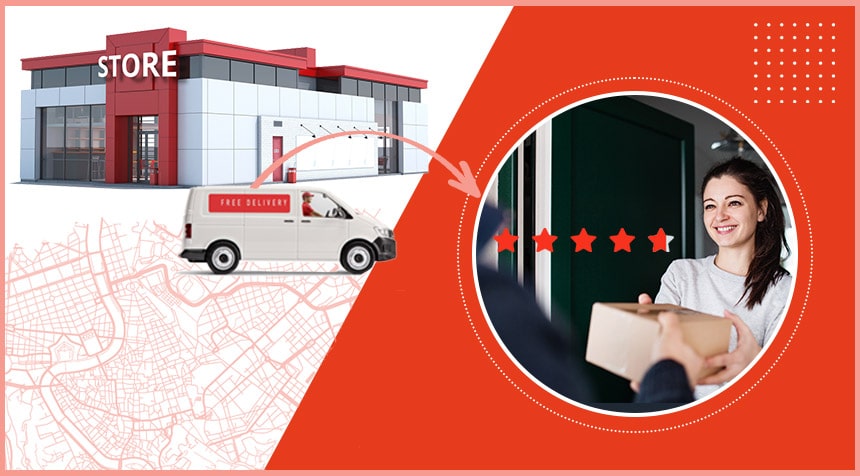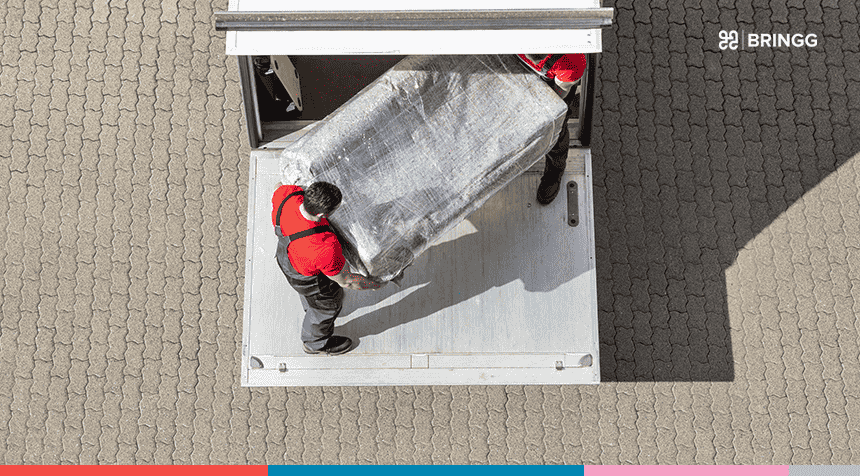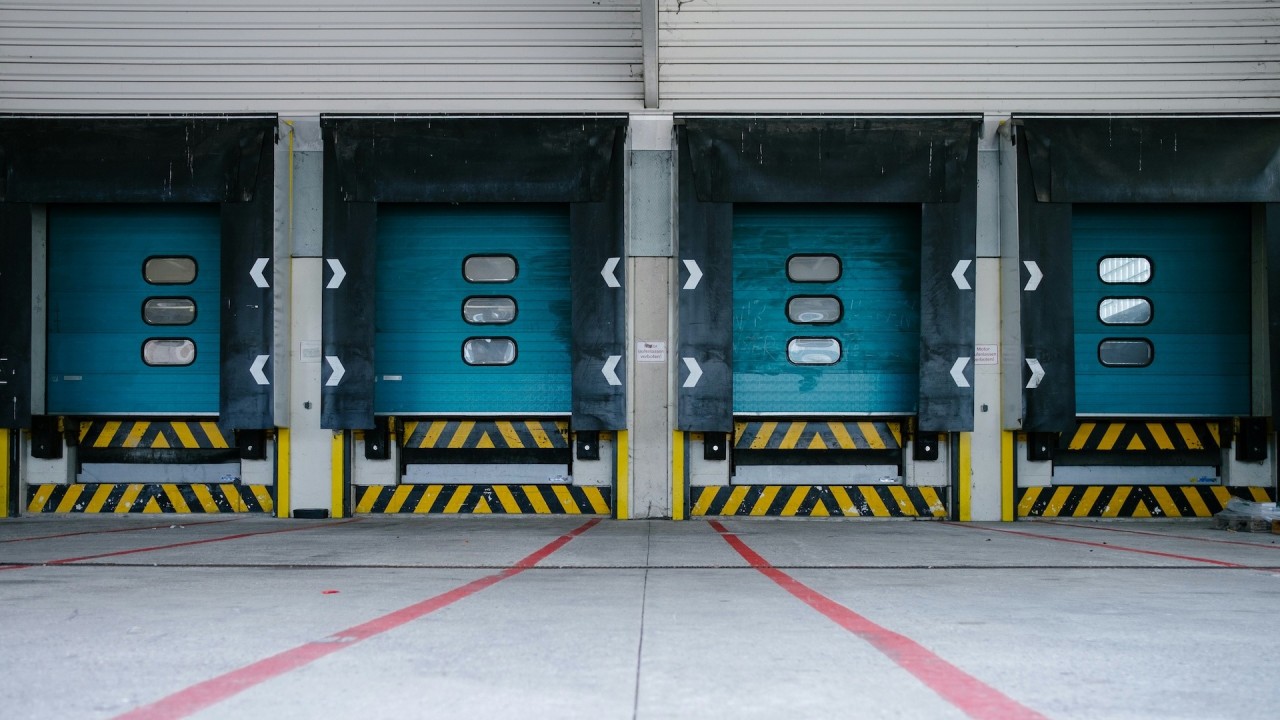As the world continues to recover from the pandemic, some things are refusing to go back to the way they once were. With shoppers increasingly buying online, the role of the physical retail store, and the relationship it has to customers, is rapidly evolving. One of the most noticeable changes is the use of the ship from store fulfillment model.
This article explores why ship from store is gaining traction among eCommerce sellers today.
What is Ship from Store?
Ship from store, also known as deliver from store, is a method of cutting out traditional warehouses and fulfillment centers and fulfilling orders straight from physical stores. The SFS (ship from store) process makes brick and mortar locations a vital component of the omnichannel experience and boosts customer satisfaction by fulfilling orders quickly and on time.
Why Ship from Store is gaining in popularity
Consumers today want their ecommerce orders to arrive fast – and retail companies can’t keep up with the demand.
Ship from store is all about turning stores into agile fulfillment centers.
Using a physical store as a means for fulfilling eCommerce orders through delivery makes sense, since retailers can capitalize on the existing store inventory and proximity to consumers, resulting in a positive online shopping experience.
The growing wave of retailers offering ship from store comes at the same time as the acceptance that multi-channel is not enough anymore. In order to move to a true omnichannel business model, retail leaders need to find new ways to leverage their existing network of physical stores and local stock for eCommerce fulfillment.
How to optimize the Ship from Store process
Brands looking to launch the ship from store experience from their stores have to optimize the process to keep it effective. This means providing store staff with tools to manage all orders and incoming drivers efficiently, including customers that arrive for in-store pickup or delivery drivers picking up orders to be delivered.
By using a single solution to manage all store fulfillment operations – ship from store, BOPIS, and curbside pickup – a retail company will reduce its cost to deliver and achieve faster order fulfillment.
How Ship from Store works
These are the 4 steps to the buy online, deliver from store (BODFS) process:
- An online shopper places an order on a retail website (or one of the other various online channels) and chooses a delivery time and date. The checkout process must be synced with store inventory and store locations in order to guarantee that the supply chain can meet the requested time and date.
- Retail stores manage the entire order fulfillment process. This includes pulling the inventory from shelves, staging, packing, and preparing for shipment.
- The brick and mortar store ships the product to the customer and makes sure that the drivers who arrive receive the correct orders.
- The customer receives the order quickly due to the proximity of the physical store to their location.
What are the advantages of shipping online orders from store locations?
Retailers who are adopting the ship from store model benefit from a range of benefits for both the store/brand as well as the end customer.
5 advantages to ship from store:
- Power on demand delivery
- Reduce shipping costs
- Create green logistics operations
- Replace local inventory quickly
- Support omnichannel fulfillment
1. Power on demand delivery
The pressure is on to get orders shipped to customers as quickly as possible. This is also known as quick commerce.
One of the key decision points for shoppers now is whether the retailer is able to deliver exactly where and when they want their package. According to a GreyOrange survey, 45% of online shoppers expect 2-day shipping at most, for online orders. 57% of consumers stated that they would not use a retailer again after three late orders.
Shipping products locally can enable same day delivery across many different geographies. This offering can help a company gain a competitive foothold in its market and sell to more consumers looking for fast fulfillment.
In order to power this fulfillment speed, however, retailers must combine the ship from store model with multiple local carriers or crowdsourced delivery fleets who can provide coverage to all the different locations – and find a solution for managing the logistics of this process.
2. Reduce shipping costs
In a ship from store model, as opposed to ship from warehouse, shipping costs are naturally reduced as carriers are delivering locally.
As opposed to shipping from a fulfillment center or distribution center, with ship from store the supply chain is significantly shortened, and therefore less mileage needs to be covered along the delivery route.
Not only is each delivery shorter, but also the business can pack in more orders along each route, since distances overall are reduced.
This reduction in price means that ship from store also reduces shipping costs for the consumer. With deliver from store, brands can offer slow delivery from a local store for free (which will still be faster than coming from distant distribution centers) or on demand delivery for those willing to pay.
3. Greener Logistics
Ship from store can reduce carbon emissions by replacing the emissions from dozens of shoppers driving to a store for in-store shopping or BOPIS, with a single driver.
When it comes to a retailer’s own carbon emissions, the savings are just as great. Normal purchases ordered online come from regional warehouses. Individual orders have to be shipped to multiple points before they reach the recipient. In the Ship from store model, the company sends a bulk order of merchandise to a store, and then the store ships out items by truck to local locations, reducing overall emissions for the retailer.
4. Replace local store inventory quickly
In the aftermath of the global pandemic, people are visiting brick and mortar stores less frequently than before. This means that it can sometimes be difficult for a store to move inventory before it expires or becomes unsellable.
Using a ship from store model helps brands to move more inventory, more easily, by fulfilling online orders according to exactly what they need to get rid of. Chains with a large number of locations within a relatively short distance have higher volumes of stock available locally, and can juggle store inventory to work in their favor.
5 Support Omnichannel fulfillment
Many retailers are working today to make physical stores a vital component of the omnichannel experience. For example, they are utilizing their stores by offering click-and-collect options and by enabling customers to return in-store any unwanted items that they purchased online.
Another option is to use stores as part of retail delivery: pick orders in the store and ship them to the customer. In fact, according to recent survey data, this is the most popular method for stores to handle fulfillment of eCommerce orders.
Retailers benefit from using their stores as flexible and agile retail fulfillment centers, which are also closer to the final customer, in order to fulfill online orders more quickly and offer on demand services without incurring exorbitant overhead costs. Customers also benefit from not having to drive to the store to pick up an item, and from being able to order big items such as furniture without worrying about fitting them into their car.
In an omnichannel environment, a retailer must understand that shipping services are an extension of their business. Consumers now have multiple touchpoints with retailers and expect seamless interactions across all channels. They can order what they want, when they want, on whatever device they want, and have it delivered how they want.
In addition, by offering ship from store, retailers with a robust network of stores may find a viable way to compete with Amazon’s huge fulfillment network. The key lies in turning stores into agile distribution centers. Retailers who implement the Buy Online Deliver From Store model (BODFS) as well as ship from store will be delivering the convenience and speed they need to build loyalty and increase sales.
Should all retailers be using Ship from Store?
A wide range of retail businesses and brands can benefit greatly from the SFS model – especially now, when people are less likely to get in their cars and buy in person.
In the case of department stores, using retail storefronts for deliver from store has been a lifesaver. As department stores are almost exclusively located in malls and large shopping centers, SFS has given these stores and their staff work and a purpose- to fulfill orders.



